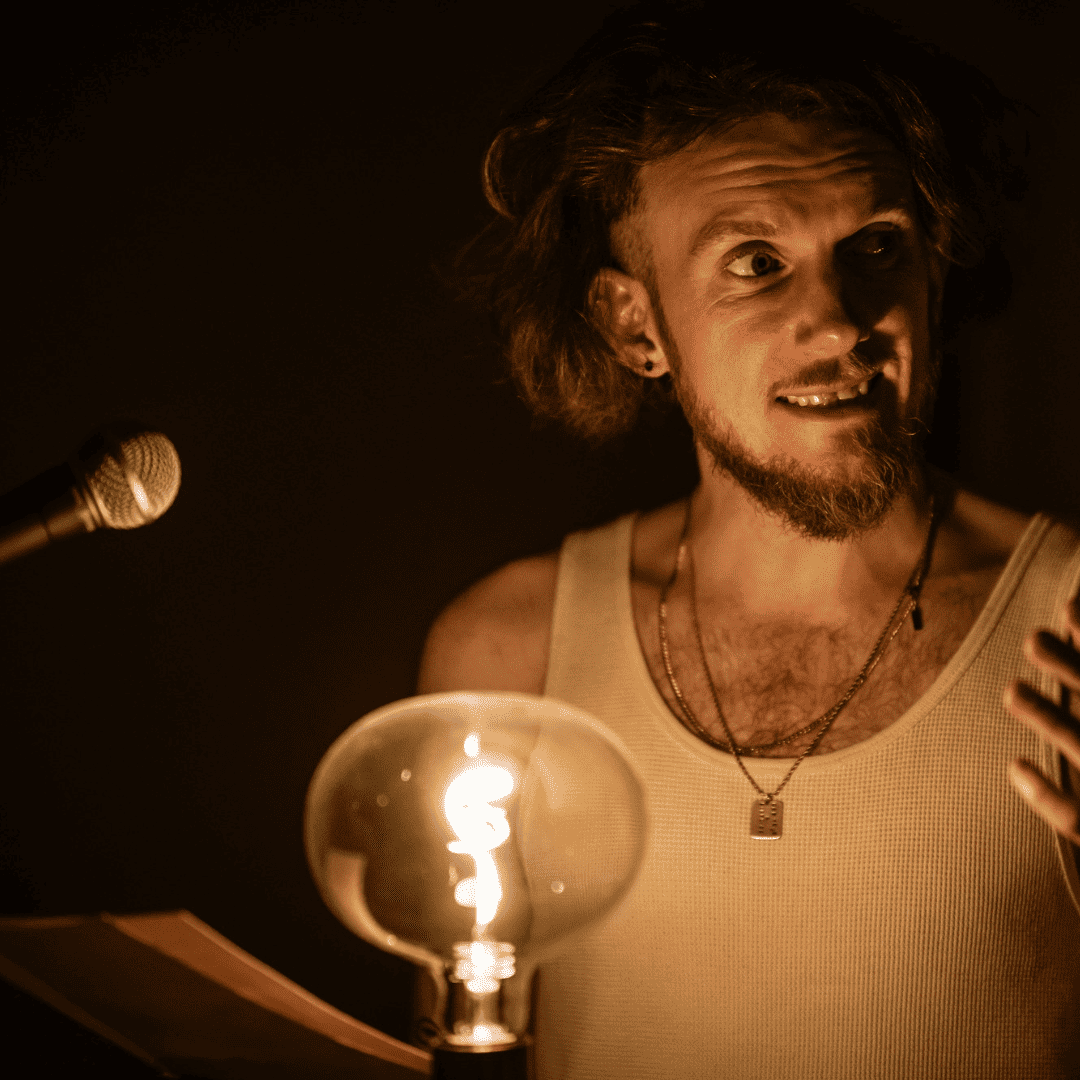The myths of the world of antiquity continue to fascinate the modern world millennia after they informed everyday custom and superstition, perhaps none more so than the stories of ancient Greece. There are works derived from the ancient Greek myths embedded within our own modern-day popular culture. Whether being explored in the songwriting of Anais Mitchell for her folk-blues musical Hadestown or introducing the young to the ages old stories in Rick Riordan’s literary works (the most notable being the Percy Jackson series), the old tales persist.
The theatre as a place of entertainment was invented by the ancient Greeks. The artform of acting and professional performance? Another Hellenic invention. The ancient Greek myth of Helios was recently given the treatment for stage adaptation by theatrical duo Wright & Grainger. Arriving in the warm confines of the Ventnor Exchange, I was struck by the apparent intimacy of the oncoming performance. Adorning the immediate space inside was a seating arrangement oriented around a single microphone, a modest sound system and a number of standing lamps…
The performance began with an informal introduction to the world of Wright & Grainger and collection of varied solar-based trivia from members of the audience – Helios was the original Greek deity of the sun after all. Pleasantries aside, the one-man play began with the igniting of the aforementioned lamps (rustic in aesthetic quality thanks to a plethora of old-world bulbs), and the evening matinee began.
Establishing the scene with a vignette of the updated rural Yorkshire setting, the performance promptly encouraged audience members benefitting from a theatrical zeal to read the parts of secondary characters throughout the play. Aside from the misplacement of the omnipresent dialogue cards hampering this somewhat elementary device, the addition of another voice added some much needed third dimension to the performance.
Occasionally dipping into the realms of freeform, the play swerved from straight storytelling to the kind of intense monologuing typically reserved for a beat poem. The words appeared to have trouble rolling off the narrator’s tongue, and not allowing time for the desired impact to settle in.
Despite this, there was a general sense of intimacy throughout that often feels lacking in most small productions, aided by the lighting and close proximity to the performance. Overall, there was good audience interaction, a general sense of setting which helped to establish the reworking of the myth from ancient Greece to the relatively recent past. With an interesting choice of myth for adaptation, the story was engaging as many would not have heard it before. Although the main focus of the play being not Helios but his son Phaeton might have been construed as misleading, were it not for the original source material doing the same.
To sum up, the play did have minor issues, but these were mainly in the planning and execution of the dialogue. The ambience of the room was impressive with the highlight being those lamps. Given more time to prepare and finesse finer aspects of the performance, the play could have real potential.
Review by Zachary Dawson




